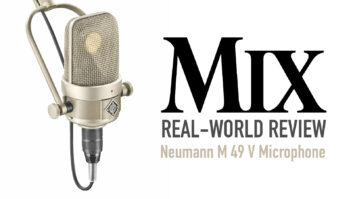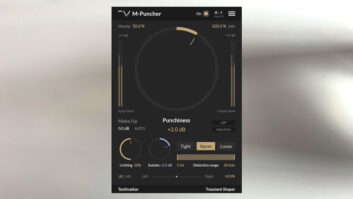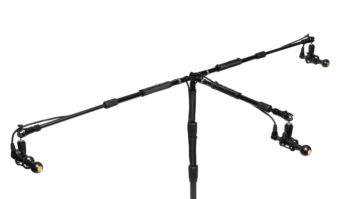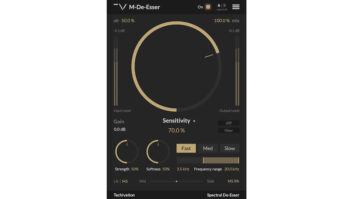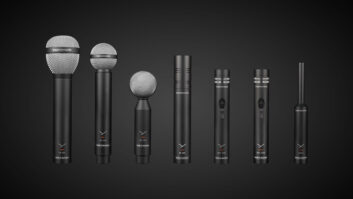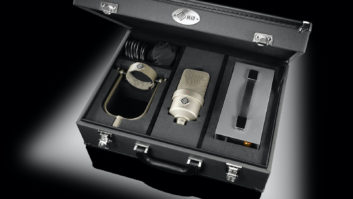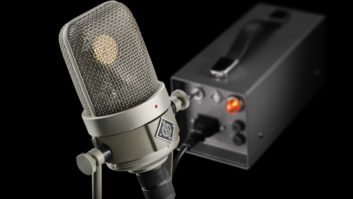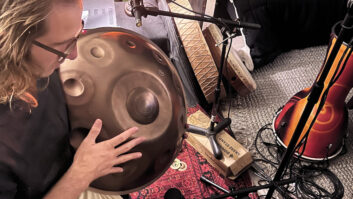The original Telefunken Ela M 251 microphone has quite a history.
Telefunken originally contacted AKG in 1958 to develop the 251; the
resulting design incorporated the same CK12 capsule, 6072 tube and T-14
transformer as the AKG C 12 mic.
AKG settled on two models: the Telefunken 250 and 251. The
two-pattern 250 was designed to compete with the Neumann U47,
originally developed by former Telefunken employee George Neumann, and
the 251 was developed as a direct replacement for the AKG C 12.
Through the years, many A-list engineers and collectors have
responded enthusiastically to these gems and have created a trend for
acquisition, as well. The Wall Street Journal published an article in
the 1990s on the original Telefunken Ela M 251, describing it as one of
the best overall investments of the 21st century.
Toni Fishman of Telefunken USA recognized this and decided to
develop a reissue. His business first developed identical replacement
parts for vintage 251s. A chance meeting with Allen Sides in Nashville
resulted in Sides telling Fishman that there was one particular mic in
his collection of more than 20 vintage 251s that was consistently used
by Joni Mitchell for many of her classic recordings. Unfortunately,
there was a small fire in the studio in which this mic was being used,
and the 251was damaged. Sides agreed to sacrifice the mic so that
Fishman could literally raise the capsule from the ashes to validate a
schematic for use in the development of a world-class reissue: the Ela
M 251.
Visually, Telefunken USA’s Ela M 251 ($10,000) is identical to the
original, right down to the silver logo. The body measures
approximately eight-and-a-half inches long and two inches in diameter.
It features the familiar three-position, sliding polar-pattern selector, and the mic connects to
the power supply unit via a Neutrik 6-pin XLR
IN THE STUDIO
In application, the mic was a pleasure to work with. It comes in a
vintage-style, humidity-controlled tweed briefcase with form-fit slots
for the mic case, cable and power supply. I first used the mic to
record a rhythm section; specifically, as an overhead for tom fills.
The mic truly shined and captured the performance while complementing
the sonics of the instrument in the room. The drum’s definition was
clear and precise. Later, I recorded an acoustic guitar on the same
piece of music. The guitar sounded absolutely wonderful with great
personality and color, leaving very little need for compression or
equalization.
On another session, I placed the mic above a snare drum that was hit
with blast sticks. Again, this backbeat performed in a small room
sounded glorious and instantly became the basic rhythm track for the
master. I then used it to record additional percussion, including
tambourine, djembe, shaker and bass drum. Similar to the drum
experience from the previous session, the mic captured the performance,
while allowing the instruments to really speak in the track. In both
situations, the 251 was sent through a Universal Audio 2-610 mic pre
and sent directly to a hard disk recorder. Occasionally, the chain
included a Universal Audio LA-2A limiter. Despite any additions, the
251’s airy, sonic softness added depth to the recordings.
Next, as an overdub, I used the mic to record a Takamine six-string
steel guitar and a classical nylon-stringed guitar. I set the mic to a
cardioid pattern and placed it about a foot from the 12th fret.
Occasionally, I placed it further away to add a little depth to the
sound. Again, the results were stunning.
I should state that I had an original 251 available at the session
and often used it as an alternative to measure performance. In all
tests, the new Ela M 251 sounded as good as, or better than, the
original.
Next, I used the mic to record a vocal, with an LA-2A placed in the
chain for some subtle compression. The voice sounded awesome. When the
original 251 was used for comparison, you could hardly tell the
difference between the two. The brilliant top end along with its full
bottom took the vocal performance to a higher level. Finally, I used it
to record a violin and harmonica to complete the session. Here, the mic
really brought out the tone of the violin with a soft clarity that
complemented the mix.
CONCLUSION
Telefunken USA’s Ela M 251 is an incredible mic. In every application,
it never let me down. From the subtle guitars to the abusive transients
of powerful percussion, it rose to each occasion with great results.
The $10k price tag can be a bit of a shocker, but you get what you pay
for. Regardless of the price, I recommend checking it out, because it
is well worth the experience. It appears to have everything; however,
you must supply the talent.
Telefunken USA, www.telefunkenusa.com
